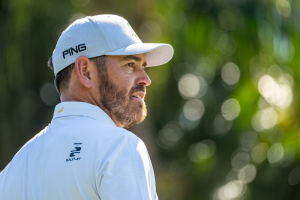Opinion & Analysis
9 things that prevent top amateurs from realizing their pro golf dreams

I’m sure we all know a top young amateur golfer with aspirations of turning pro. It may be the kid at your local club who hits the ball a country mile and has a short game that would make Seve proud. Or it might be a hot shot you’ve seen at a tournament, and followed his or her progress since they were knee high to a grasshopper.
You’ve watched them win local and even regional tournaments from high school into the top amateur ranks, and think they will be the next Rory McIlroy or Jason Day. So why do so few of these talented amateur golfers actually break through on the world stage? What is it about the transition from top amateur to professional golf that can act as a trap door for some, and a trampoline for others?
To find out, I spoke to Johnny Foster, who runs The Johnny Foster Golf Academy, a top Irish coaching academy targeting elite young players.
“Since 2004, my team and I have had the pleasure of coaching dozens of Ireland’s aspiring elite amateurs and professionals at our academy,” he said. “The walls have become decorated with pictures of players’ trophies and signed memorabilia. But for us, it’s the faces who aren’t there that raise our eyebrows. I often ask myself, ‘Do you remember this guy…where did he go? I was certain he’d make it.’
“On the other hand, I’ve scratched my head many more times when guys who were can’t-miss amateurs have been swallowed by the results-driven, unapologetic world of pro golf, seemingly unable to score as they did as amateurs just months before. Why is that? Did they lose their talent? Do pro golfers play to a smaller hole? I don’t think so. What I do know is that players who have made the successful transition have shared certain qualities.
With help from Foster, I created this list of the 9 things that can prevent top amateurs from realizing their pro golf dreams.
Desire
This is the biggest motivating factor in being successful in anything. Something has to drive golfers to want to be the best, and it has to be there at every point in their career. Complacency and lack of belief are desire’s biggest enemies, sapping drive and willpower.
Talent
We have all heard it said before: someone has a natural talent, or they were born with a club in their hands. Talent has to be grown and supported, however, for a golfer to reach the highest level. How many talented golfers have we heard of who never made it?
Ability
More precisely than just ability, professional golfers need the ability to score. All of the talent in the world doesn’t matter if you cannot simply get the golf ball in the hole. Scrambling, clutch putting and performance under pressure become extremely important when a career is on the line.
Johnny says: There’s only one common denominator among the players who are successful: their score. The top-25 on any given week will represent a variety of club manufacturers, listen to a multitude of coaches and probably be from a range of countries. In fact, on many occasions, the only thing they do have in common is that they have finished at the same score at the week’s end. So as much as myself or any other adviser tells you to “forget about the score and stick to the process,” you better have the potential to score at a tour standard or there’s not much point reading on. Your diet can be pure and you can surround yourself with the latest technology, which will make you feel better, but in my experience the most important number a player can produce is their stroke average in relation to par. If you have the rare ability to manipulate numbers, I’d stick to lowering that if you can, rather than fixating on your angle of attack. If you are an aspiring player, ask yourself, “Is everything I’m currently doing geared to helping me reduce my scoring average?” This is a constant pillar of our philosophy; we tirelessly work with our students to reduce their scoring average in relation to par.
Work Ethic
Along with having natural talent, there is no substitute for hard work and building a good routine. Fitness, practice, media/sponsor commitments, and travel all require hard work and good time management that needs to be engrained. Look at how seriously the modern-day players take their games these days: they train with fitness experts, work on technique with world-class coaches, and engrain their good habits with hundreds of balls almost every day. They say it takes 10,000 hours of focused practice to be world class. You don’t do that without hard work and a solid routine.
Johnny says: Learning a trade or a set of skills is a process that takes time, usually years. So consider this when planning your assault on professional golf; “I’ll give it a go for a year” isn’t really a sound plan. How many surgeons or classic opera singers give it 12 months and eventually become successful? Remember, you’re attempting to reach the 0.01 percent of people in your chosen field. Your apprenticeship will take time, so make the financial and emotional provision for it. You’re attempting to hone a very specific set of skills. From reading grain on greens to working with a professional caddy, allow yourself time to adjust. And be realistic with your deadlines. Look at your rate of progression over the past few years. Fair chance this trend is going to continue. As the saying goes, “An overnight sensation usually takes about 10 years.” The fact is that in all of the wins and trophies achieved by our clients, the vast majority were done so by long-term students who really valued and benefited from a strong player-coach bond.
Focus
Being able to multitask, prioritize and make key decisions takes a very driven and focused person. While I don’t have any experience playing golf at an elite level, I do travel a lot in my job and spend a lot of time in airports and hotel rooms. There’s stress involved: delays, missed connections, lost luggage, late nights, preparing for meetings, and a lot of lonely nights sitting on the bed of your hotel room flicking the remote. I have to interact with customers all the time in some mundanely boring meetings, but I need to be focused and at the top of my game for every meeting. Staying focused, patient and realizing that it’s part of the process — there is a routine involved.
Personality/Temperament/Attitude
This is the most often overlooked quality on this list. Some guys are well suited to the professional golfer’s life, and some aren’t. Frustration, boredom, loneliness, patience and anxiety are all hurdles to overcome. Remember, to get to the level of playing on the tour, one can assume that the golfer has talent and a track record. But to live the life week in, week out and put up with all the distractions and stress is a balance to the rewards on offer. Getting to the PGA Tour is one thing; staying there is just as much of a challenge.
Johnny says: A common thread I see among the players who seem to move seamlessly into the world of professional golf is that they continue to treat it as a game, even though it’s their “job.” It’s a bit of a contradiction this one, but the best seem to retain their sense of humour about events on the golf course and crucially don’t beat themselves up over a bad shot they hit every so often. Ideally, I’d suggest you adopt an attitude that all the hard work you do actually entitles you to the odd mistake, rather than raises the expectations that they shouldn’t happen.
Being professional
This is possibly the most wide ranging and important for those that actually do possess the potential. Do you really understand the meaning of the words “being professional?” The answer isn’t on Google. It covers everything from investing heavily in your future, traveling extensively in a very competitive atmosphere and a love of the routine.
Johnny says: To really encourage the best students to think professionally, one of the many exercises we ask them to do is take 10 minutes to either write down or imagine what being really professional and effective with their time would look like, every day. That includes rest and balance in their life — very important pillars. How close or “congruent” are they in reality with this vision? If there is a gap between their vision and reality, then the size of that gap may just determine if they reach their vision of making it.
A good team
This includes a good manager, coach, fitness instructor, friends and family. Being on the road most weeks is tough on anyone. Emotional support is important, as well as a team that can prepare the player to optimize their performance. It’s also an expensive business playing tournament golf, so having financial backing is important.
Luck
In any sport, luck always plays a role: avoidance of injury, being in the right place at the right time, hitting a shot at a key moment, getting a break with a bounce. Many talented players could have gone a lot further with a lucky break. Gary Player’s famous quote, “The more I practice the luckier I get,” has a grain of truth, but Lady Luck certainly helps.
Johnny says: “We have a mantra at our academy: L.U.C.K. stands for Laboring Under Correct Knowledge. In other words, if you work at the right stuff, you’ll be lucky!”
So, you think you have what it takes?
Tour golfers play nearly every week at a different course. They deal with travel, media and sponsor commitments, and compete on courses from the tips with the rough thickened up and the greens shaved. Still, the average weekly winning score is 16-under par. To make the cut is 4-under, which means to get a pay check you cannot afford big mistakes or you are packing up in the parking lot on a Friday night. A lot of poor shots and rounds are induced by fatigue, lack of preparation, low confidence and stress.
And it’s an expensive business. The running costs of playing tournament golf is high. Travel and accommodation, entry fees, and caddie fees will run into tens of thousands of dollars each year. Even as an amateur, competing relies on funding from scholarships, grants and benefactors. Most of these guys will have managers who treat their players like brands, securing sponsorships, managing their time, and deciding where and when to play. But the players need to be returning on the investment, or they find themselves quickly dropped.
The reality is that very few make it to the top tier. A lot drop out along the way to take jobs in the golf industry, or even get so disillusioned they turn their backs on golf, their dreams shattered or reconfigured to reality.
Johnny says: I’ve known several very talented amateur golfers who were unable to make a successful and sustainable transition into the professional ranks. Lack of motivation, money, personality or injury had gotten in the way of their obvious talent. And by the way, it’s tough to make it, but even tougher to stay there. As coaches, we do our very upmost to educate ourselves and really try our best to support and nurture these boys and girls, but ultimately it comes down to them.
Author’s Note: Johnny Foster is an engaging guy, full of enthusiasm and ideas for players attempting to transition into the game. He can be contacted here.
- LIKE243
- LEGIT33
- WOW19
- LOL6
- IDHT6
- FLOP7
- OB5
- SHANK42
19th Hole
Vincenzi’s 2024 Zurich Classic of New Orleans betting preview

The PGA TOUR heads to New Orleans to play the 2023 Zurich Classic of New Orleans. In a welcome change from the usual stroke play, the Zurich Classic is a team event. On Thursday and Saturday, the teams play best ball, and on Friday and Sunday the teams play alternate shot.
TPC Louisiana is a par 72 that measures 7,425 yards. The course features some short par 4s and plenty of water and bunkers, which makes for a lot of exciting risk/reward scenarios for competitors. Pete Dye designed the course in 2004 specifically for the Zurich Classic, although the event didn’t make its debut until 2007 because of Hurricane Katrina.
Coming off of the Masters and a signature event in consecutive weeks, the field this week is a step down, and understandably so. Many of the world’s top players will be using this time to rest after a busy stretch.
However, there are some interesting teams this season with some stars making surprise appearances in the team event. Some notable teams include Patrick Cantlay and Xander Schauffele, Rory McIlroy and Shane Lowry, Collin Morikawa and Kurt Kitayama, Will Zalatoris and Sahith Theegala as well as a few Canadian teams, Nick Taylor and Adam Hadwin and Taylor Pendrith and Corey Conners.
Past Winners at TPC Louisiana
- 2023: Riley/Hardy (-30)
- 2022: Cantlay/Schauffele (-29)
- 2021: Leishman/Smith (-20)
- 2019: Palmer/Rahm (-26)
- 2018: Horschel/Piercy (-22)
- 2017: Blixt/Smith (-27)
2024 Zurich Classic of New Orleans Picks
Tom Hoge/Maverick McNealy +2500 (DraftKings)
Tom Hoge is coming off of a solid T18 finish at the RBC Heritage and finished T13 at last year’s Zurich Classic alongside Harris English.
This season, Hoge is having one of his best years on Tour in terms of Strokes Gained: Approach. In his last 24 rounds, the only player to top him on the category is Scottie Scheffler. Hoge has been solid on Pete Dye designs, ranking 28th in the field over his past 36 rounds.
McNealy is also having a solid season. He’s finished T6 at the Waste Management Phoenix Open and T9 at the PLAYERS Championship. He recently started working with world renowned swing coach, Butch Harmon, and its seemingly paid dividends in 2024.
Keith Mitchell/Joel Dahmen +4000 (DraftKings)
Keith Mitchell is having a fantastic season, finishing in the top-20 of five of his past seven starts on Tour. Most recently, Mitchell finished T14 at the Valero Texas Open and gained a whopping 6.0 strokes off the tee. He finished 6th at last year’s Zurich Classic.
Joel Dahmen is having a resurgent year and has been dialed in with his irons. He also has a T11 finish at the PLAYERS Championship at TPC Sawgrass which is another Pete Dye track. With Mitchell’s length and Dahmen’s ability to put it close with his short irons, the Mitchell/Dahmen combination will be dangerous this week.
Taylor Moore/Matt NeSmith +6500 (DraftKings)
Taylor Moore has quickly developed into one of the more consistent players on Tour. He’s finished in the top-20 in three of his past four starts, including a very impressive showing at The Masters, finishing T20. He’s also finished T4 at this event in consecutive seasons alongside Matt NeSmith.
NeSmith isn’t having a great 2024, but has seemed to elevate his game in this format. He finished T26 at Pete Dye’s TPC Sawgrass, which gives the 30-year-old something to build off of. NeSmith is also a great putter on Bermudagrass, which could help elevate Moore’s ball striking prowess.
- LIKE8
- LEGIT3
- WOW1
- LOL1
- IDHT0
- FLOP3
- OB1
- SHANK2
19th Hole
Vincenzi’s 2024 LIV Adelaide betting preview: Cam Smith ready for big week down under

After having four of the top twelve players on the leaderboard at The Masters, LIV Golf is set for their fifth event of the season: LIV Adelaide.
For both LIV fans and golf fans in Australia, LIV Adelaide is one of the most anticipated events of the year. With 35,000 people expected to attend each day of the tournament, the Grange Golf Club will be crawling with fans who are passionate about the sport of golf. The 12th hole, better known as “the watering hole”, is sure to have the rowdiest of the fans cheering after a long day of drinking some Leishman Lager.
The Grange Golf Club is a par-72 that measures 6,946 yards. The course features minimal resistance, as golfers went extremely low last season. In 2023, Talor Gooch shot consecutive rounds of 62 on Thursday and Friday, giving himself a gigantic cushion heading into championship Sunday. Things got tight for a while, but in the end, the Oklahoma State product was able to hold off The Crushers’ Anirban Lahiri for a three-shot victory.
The Four Aces won the team competition with the Range Goats finishing second.
*All Images Courtesy of LIV Golf*
Past Winners at LIV Adelaide
- 2023: Talor Gooch (-19)
Stat Leaders Through LIV Miami
Green in Regulation
- Richard Bland
- Jon Rahm
- Paul Casey
Fairways Hit
- Abraham Ancer
- Graeme McDowell
- Henrik Stenson
Driving Distance
- Bryson DeChambeau
- Joaquin Niemann
- Dean Burmester
Putting
- Cameron Smith
- Louis Oosthuizen
- Matt Jones
2024 LIV Adelaide Picks
Cameron Smith +1400 (DraftKings)
When I pulled up the odds for LIV Adelaide, I was more than a little surprised to see multiple golfers listed ahead of Cameron Smith on the betting board. A few starts ago, Cam finished runner-up at LIV Hong Kong, which is a golf course that absolutely suits his eye. Augusta National in another course that Smith could roll out of bed and finish in the top-ten at, and he did so two weeks ago at The Masters, finishing T6.
At Augusta, he gained strokes on the field on approach, off the tee (slightly), and of course, around the green and putting. Smith able to get in the mix at a major championship despite coming into the week feeling under the weather tells me that his game is once again rounding into form.
The Grange Golf Club is another course that undoubtedly suits the Australian. Smith is obviously incredibly comfortable playing in front of the Aussie faithful and has won three Australian PGA Championship’s. The course is very short and will allow Smith to play conservative off the tee, mitigating his most glaring weakness. With birdies available all over the golf course, there’s a chance the event turns into a putting contest, and there’s no one on the planet I’d rather have in one of those than Cam Smith.

Louis Oosthuizen +2200 (DraftKings)
Louis Oosthuizen has simply been one of the best players on LIV in the 2024 seas0n. The South African has finished in the top-10 on the LIV leaderboard in three of his five starts, with his best coming in Jeddah, where he finished T2. Perhaps more impressively, Oosthuizen finished T7 at LIV Miami, which took place at Doral’s “Blue Monster”, an absolutely massive golf course. Given that Louis is on the shorter side in terms of distance off the tee, his ability to play well in Miami shows how dialed he is with the irons this season.
In addition to the LIV finishes, Oosthuizen won back-to-back starts on the DP World Tour in December at the Alfred Dunhill Championship and the Mauritus Open. He also finished runner-up at the end of February in the International Series Oman. The 41-year-old has been one of the most consistent performers of 2024, regardless of tour.
For the season, Louis ranks 4th on LIV in birdies made, T9 in fairways hit and first in putting. He ranks 32nd in driving distance, but that won’t be an issue at this short course. Last season, he finished T11 at the event, but was in decent position going into the final round but fell back after shooting 70 while the rest of the field went low. This season, Oosthuizen comes into the event in peak form, and the course should be a perfect fit for his smooth swing and hot putter this week.

- LIKE12
- LEGIT3
- WOW1
- LOL1
- IDHT0
- FLOP1
- OB1
- SHANK1
Opinion & Analysis
The Wedge Guy: What really makes a wedge work? Part 1

Of all the clubs in our bags, wedges are almost always the simplest in construction and, therefore, the easiest to analyze what might make one work differently from another if you know what to look for.
Wedges are a lot less mysterious than drivers, of course, as the major brands are working with a lot of “pixie dust” inside these modern marvels. That’s carrying over more to irons now, with so many new models featuring internal multi-material technologies, and almost all of them having a “badge” or insert in the back to allow more complex graphics while hiding the actual distribution of mass.
But when it comes to wedges, most on the market today are still single pieces of molded steel, either cast or forged into that shape. So, if you look closely at where the mass is distributed, it’s pretty clear how that wedge is going to perform.
To start, because of their wider soles, the majority of the mass of almost any wedge is along the bottom third of the clubhead. So, the best wedge shots are always those hit between the 2nd and 5th grooves so that more mass is directly behind that impact. Elite tour professionals practice incessantly to learn to do that consistently, wearing out a spot about the size of a penny right there. If impact moves higher than that, the face is dramatically thinner, so smash factor is compromised significantly, which reduces the overall distance the ball will fly.
Every one of us, tour players included, knows that maddening shot that we feel a bit high on the face and it doesn’t go anywhere, it’s not your fault.
If your wedges show a wear pattern the size of a silver dollar, and centered above the 3rd or 4th groove, you are not getting anywhere near the same performance from shot to shot. Robot testing proves impact even two to three grooves higher in the face can cause distance loss of up to 35 to 55 feet with modern ‘tour design’ wedges.
In addition, as impact moves above the center of mass, the golf club principle of gear effect causes the ball to fly higher with less spin. Think of modern drivers for a minute. The “holy grail” of driving is high launch and low spin, and the driver engineers are pulling out all stops to get the mass as low in the clubhead as possible to optimize this combination.
Where is all the mass in your wedges? Low. So, disregarding the higher lofts, wedges “want” to launch the ball high with low spin – exactly the opposite of what good wedge play requires penetrating ball flight with high spin.
While almost all major brand wedges have begun putting a tiny bit more thickness in the top portion of the clubhead, conventional and modern ‘tour design’ wedges perform pretty much like they always have. Elite players learn to hit those crisp, spinny penetrating wedge shots by spending lots of practice time learning to consistently make contact low in the face.
So, what about grooves and face texture?
Grooves on any club can only do so much, and no one has any material advantage here. The USGA tightly defines what we manufacturers can do with grooves and face texture, and modern manufacturing techniques allow all of us to push those limits ever closer. And we all do. End of story.
Then there’s the topic of bounce and grinds, the most complex and confusing part of the wedge formula. Many top brands offer a complex array of sole configurations, all of them admittedly specialized to a particular kind of lie or turf conditions, and/or a particular divot pattern.
But if you don’t play the same turf all the time, and make the same size divot on every swing, how would you ever figure this out?
The only way is to take any wedge you are considering and play it a few rounds, hitting all the shots you face and observing the results. There’s simply no other way.
So, hopefully this will inspire a lively conversation in our comments section, and I’ll chime in to answer any questions you might have.
And next week, I’ll dive into the rest of the wedge formula. Yes, shafts, grips and specifications are essential, too.
- LIKE34
- LEGIT7
- WOW1
- LOL1
- IDHT2
- FLOP3
- OB1
- SHANK3
-

 19th Hole2 weeks ago
19th Hole2 weeks agoDave Portnoy places monstrous outright bet for the 2024 Masters
-

 19th Hole4 days ago
19th Hole4 days agoJustin Thomas on the equipment choice of Scottie Scheffler that he thinks is ‘weird’
-

 19th Hole2 weeks ago
19th Hole2 weeks agoTiger Woods arrives at 2024 Masters equipped with a putter that may surprise you
-

 19th Hole4 days ago
19th Hole4 days ago‘Absolutely crazy’ – Major champ lays into Patrick Cantlay over his decision on final hole of RBC Heritage
-

 19th Hole2 weeks ago
19th Hole2 weeks agoTwo star names reportedly blanked Jon Rahm all week at the Masters
-

 19th Hole1 week ago
19th Hole1 week agoReport: LIV Golf identifies latest star name they hope to sign to breakaway tour
-

 19th Hole2 weeks ago
19th Hole2 weeks agoNeal Shipley presser ends in awkward fashion after reporter claims Tiger handed him note on 8th fairway
-

 19th Hole1 week ago
19th Hole1 week agoBrandel Chamblee has ‘no doubt’ who started the McIlroy/LIV rumor and why
















James
Jul 30, 2016 at 8:45 pm
Money has got to be number one…..you need money just to practice, Kids that grow up in a County Club family already have 9 out 10 better chance of making it to the Pros. You find the best local muni player in the 14 to 16 year old range, where does he get to hit 200 Pro V1’s for 2 hours to a green from 120 yards on in almost ZERO…the only non-Country club kids who can make it are the ones who get sponsored by someone or group that gets him/her into a club to play and practice. Can a kid make it practicing on Muni greens and playing a 6,400 yard course 4 times a week, with fairways that give you a country club lie about twice in 18 holes???? all 9 things the writer talks about can be present in spades but if there is no money you have ZERO chance…
Eric Sidewater
Mar 20, 2019 at 8:35 pm
This is fake news. You can make golf as hard or as easy as you want when you’re practicing, which I recommend takes place on the course. If you’re so compelled, work at a place with a range/course part-time so you have free access. Play by yourself with a cart with 3 balls, pick the worst shot of the bunch each time and hit the 3 balls from that spot, essentially
worst ball.” Then force yourself to play with clubs that are your weakness, take time to print out course maps and diagram exactly where you’re going to aim your shots/misses on tee shots *(noting the distance between hazards (at least 65 yards), the fat part of the greens, and putt from the three toughest spots on each green from varying distances.
michael johnson
Jul 30, 2016 at 6:25 pm
i was a very promising amateur once. nothing held me back, i made it on tour on my first attempt by winning on a sponsors excemption and i have won a record number of majors.
ILoveHateGolf
Jul 29, 2016 at 10:31 pm
Some of these are pretty appropriate to any field. ‘Write down what it means to be a professional.” I’m adopting that one myself.
Nice column, Mark.
Square
Jul 29, 2016 at 7:15 pm
My freshman year of college, I could shoot 72 on any course and 68 routinely at my home course. One day I played with a mini tour player and played really well on my home course. Shot 68 but it could have been a 66. He shot 61 and couldn’t do anything on the PGA tour or mini tours. Needless to say, 25 years later, I never looked back. He was so talented and I just couldn’t keep up. Best decision I ever made.
Harry
Jul 29, 2016 at 5:32 pm
I can name 14 things that kept most of us out of the ranks- driver, 3w, 2i, …….
ILoveHateGolf
Jul 29, 2016 at 10:28 pm
Beautiful…
talljohn777
Jul 29, 2016 at 3:28 pm
Damn, I was so close on all of those.
LA Billyboy
Jul 29, 2016 at 11:07 am
I could never take the travel. Not a life I have ever aspired to or envied. The PGA Tour is essentially a travelling Circus, the players are the performers and animals. I love playing golf too much to ruin it and turn it into a job.
golfraven
Jul 29, 2016 at 10:59 am
I agree with all above. Dedication and drive would be biggest factors. The earlier you show the player what the odds are and what they have to face and are against the better. Persistance and discipline will determin if they will be able to fight back from disappointments. A shitty low tour player can still become great PGA player if he does not drop the ball too early.
M SmizWit
Jul 29, 2016 at 5:52 am
As if anything useful ever came out of Ireland.
Mark Donaghy
Jul 29, 2016 at 11:09 am
Outside Guinness, Whiskey, St. Patrick, Oscar Wilde, C.S Lewis, Samuel Beckett, George Best, Liam Neeson, U2, Potato Crisps, the submarine, pneumatic tyres, the portable defilrillator and a bunch of other stuff, you are probably right!
Mat
Jul 28, 2016 at 10:45 pm
None of this talks about who can support a guy with hotel money for 6-36 months on the regional tours. There’s little money when you compare it to the travel costs involved. If you have a backer, you have a much, much better chance. If you never have the time or resources to learn to be a touring professional, you’ll end up needing a paycheck. Jobs look very good, and that focus you needed to turn that 70 into a 68 isn’t there. Those “sure fire” guys have to eat.
Rory
Jul 28, 2016 at 1:41 pm
Money is a big one….